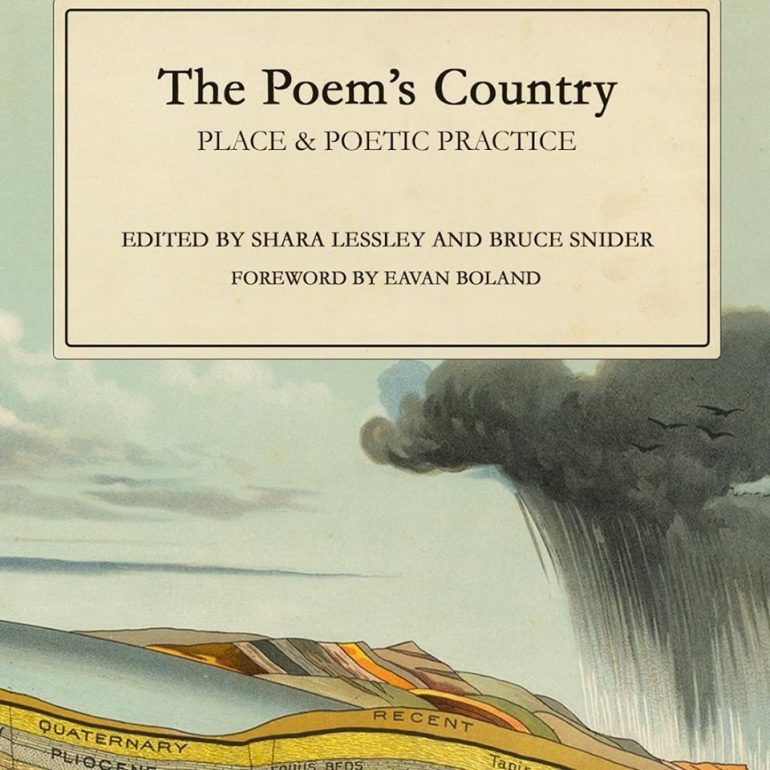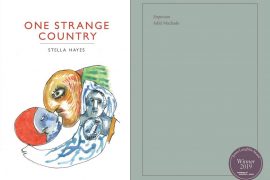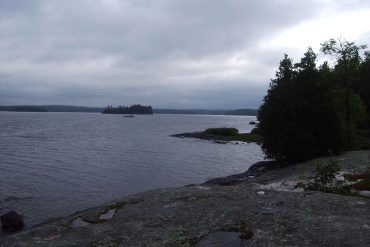The Poem’s Country: Place and Poetic Practice (Pleiades , 2017) edited by Shara Lessley and Bruce Snider
Though the mountain has been fixed in place for millennia, it remains one of the most unstill objects that I can imagine—unstill, and unsettling.
Katy Didden, “A Poetics of Tectonic Scale: The Great Distance Poem”
Twenty-nine contemporary American poets—twenty-nine distinct and distinguished voices—illuminate numerous facets of place in poetic practice in this unique collection of essays, and in doing so reveal the vastness of the concept itself. None will answer to romantic quests for the pastoral in lyric form, though, be it urban or rural. Instead, each essay adds to the cuts in the veil covering the complex relationship of place and poet. The reader is dropped into the middle of fundamental discussions in which place may assume geographic, historical, symbolic or imaginary dimensions. Standing in a place becomes a choice and looking a political act, an obligation—place as a moving target, the conversation evolving and timelier than ever. In these essays, alienation functions as an unavoidable and necessary gateway for reader and poet alike: creativity sustaining tension rather than focused on achieving harmony.
Without chapters or sections, the anthology presents an intuitive sequence providing a layered experience similar to that of an abstract painting, where a dash of the same color appears here and there to be connected and reconnected allowing paradoxes to shine. Accordingly, the groups below are based on my own associations, not on the essays’ actual sequence; and the parallels drawn here may as soon be drawn otherwise and more numerously.
Framing the anthology are two essays on home as the experience of union between body, mind, and location, as the place in which the authors feel “most alive.” Elizabeth Bradfield’s opening “Fluid States: Ocean as Place & Poetic” is a lyric statement about her oceanic home, which is also the habitat of her creative impulse. As such it is not the be all and end all, however, and Bradfield writes: “I want to advocate for the ocean as a muse. But I also want to advocate for an oceanic muse that is not all about projection, but investigation,” and, “to wake up and peer beyond the surface, to break through our own reflections and learn what goes on unseen…The truth is, I am most alive in my physical body and thus in the hum and thrum that drives me toward poems when I am on a boat on the ocean” (39-43). The anthology closes with Spencer Reece’s “I Had a Place,” an equally lyrical account, focused on his searching, therefore heightening the sense of homecoming to an almost epiphanic experience: “He beckoned. I followed. I had a place. I had a place. I stepped through the little entrance” (321). In between Bradfield’s and Reece’s differing angles of home, the essays in the anthology meander freely. They may set out from or arrive at a similar spot, but through different doors. For their authors, place and its conceptions reach far beyond location and perspective—place becomes a calling.
Homecomings
There is a deep sense of rootedness in Mark Wunderlich’s “Famous Mushroom”—the recounting of his own and his poetry’s homecoming—while the title foreshadows the irrevocable distances travelled: “The poem which had been read to maybe a hundred urban audiences was, for the first time, not exotic…Read to this audience, the poem transformed. The town I elegized was alive with the daily experience of the people who live there, and who had come to listen to a writer tell them about themselves.” (268). Echoing Bradfield, for Wunderlich being at home is everywhere he comes alive: “I am alive in a multitude of places, though I know with certainty that most of those places no longer exist” (269). Similar to Bruce Snider in “Trouble & Consolidation: Writing the Gay Rural,” Wunderlich touches on the challenges of growing up queer in rural America. Both he and Snider describe a back-and-forth between their rural hometowns and the big cities to which they had moved. What propels Snider’s account is the homelessness of his experiences among the imaginative norms of the place he grew up in: “How could he render his first same-sex kiss if it happened near the buckshot-dented water barrels at the back barn?” (89). In Hayan Charara’s “Thinking Detroit,” the hometown becomes a place of ever-changing returns, a study of the fickle authoritativeness of remembering and the uncertain difference “between thinking about the past and remembering the past” (195). Charara concludes that a “return to an event or idea via memory…belongs as much to the new and now as the old and then” (195-6). Truth becomes truths over time, recounting the past an unending tale faithful to the evolving self: “Because I have changed, so has my past” (199).
“Tectonic Scale”
As a collective, the following essays are more analytical in style and scope and could be taken as a theoretical basis for the entire collection. They offer critical tools for the examination of the hegemony of representation and naming, including erasure and utter dislocation. According to Christopher Kempf’s in-depth reflection, “The Cloud, The Desktop, & the Poetics of No-Place,” the imagery used to depict cyberspace amounts to euphemism, where “the cloud is the Internet as it would like to be, a bright, amniotic mist in which we’re suspended together with our media….” He warns that the Internet (and the cyber-technologies), “far from erasing place… more clearly delineate…those boundaries that continue to structure our stubbornly ‘placed’—national, but also gendered, and raced, and classed—forms of experience” (48-50).
Kazim Ali’s “What’s American about American Poetry?” also challenges “our present machine-driven sense of geographical placelessness,” and has us profoundly question “a reality in which notions of ‘plurality’ and ‘hybridity’ and ‘alterity’ are just three more convenient ways of organizing a population into compliant behavior and tokenizing a couple of voices in order to avoid seeing or seeking out the rest of them.” Ali advocates that his reader reject “the historical (and geographical!) amnesia inherent in the concept of ‘America’” (66-69). Moreover, seeking a poetics for “this landscape, on this continent, this strange life,” Ali wonders if the Anglo-American literary tradition should be regarded as the actual tradition of alterity, and contemporary Native writers’ work, with its capacity “to fuse The Anglo-American literary tradition with Native languages, poetics and forms of expression,” as “the real American poetry” (74). Keith Ekiss’s craft-based “Herrick to Harjo: Looking for Food in the Nature Poem” also looks to Native writers for inspiration, specifically to “point us in the direction of a useful attentiveness, to show how in another tradition food and the nature poem have always been naturally entwined” (160) while analyzing the thematic scarcity of food production in the English-language poetry canon—an increasingly urgent subject due to climate change and ecological disasters.
“Cosmopoetics is ultimately not just about mapping, or even seeing. It’s also about listening, about a radical vulnerability to the other,” (209), Philip Metres observes in “Homing In: The Place of Poetry in the Global Digital Age,” an (in every sense) critical analysis. Katy Didden, in “A Poetics of Tectonic Scale: The Great Distance Poem,” presents her deeply enlightening panorama of traditions within the poetics of place and establishes a theoretic framework for the act of looking required of today’s poets, emphasizing that “we do not look across the great distance as solitary viewers; instead, we look out, elbow-to-elbow, with others” (290).
Re-/connect: “A Poetics of Ghostliness”
Through personal accounts and lyric meditations, other poets reflect on the ambivalence of continuity, its precariousness, their quest for it, and/or obligation to re-/establish it via poetry. Nick Lantz’s “Ghost Towns” suggests “a poetics of ghostliness” that seeks to account for the absences sensed in a place by letting them lead us into our unease (94-5). Lantz notes, “A haunt after all, is a place…Place endures. Its features may be altered or destroyed, but our connection to it transcends such effacements…its coordinates remain…It is thus often what is missing from a place—the juxtaposition of endurance and loss—that makes it ghostly.” Rigoberto González’s ghosts in “Unpeopled Edens” haunt his relationship with the U.S.-Mexico border, the root of his poetry, at least in part: “I owed my escape, my luck, to generations of damaged hands. My responsibility was to honor their stories with paper and ink—the only tools I knew…My family worked the gardens of Eden every day, and every day broke into a sweat to prove it. Where did the body end, and where did the land begin? …What I write is not indictment; it’s response” (108-11). Likewise, without referring to ghosts, Amaud Jamaul Johnson’s “Broad Daylight” lays out how implications of his hometown impact his poetic practice, contending that, “Poetry makes sport of silences, assumptions, and inconsistencies. Thinking about Compton, writing about home, my challenge is negotiating an exterior narrative while confronting intimacies…I know I’m not obligated to write about history. But I don’t feel my individuality is at odds with a historical identity. I think we are connected, and I want a poetics that demonstrates that bridge” (137-142).
With his lyric sequence, “On Writing from the New Oceania,” Craig Santos Perez depicts the unity of his work, its single-minded effort to put Guam, his place of origin, on the map—the essay’s structure itself reflecting the archipelago, one of his metaphors for “oceanic writing,” in which books form islands: “I imagine that poems are song maps of my own journey to find Guam across historical and diasporic distances. I imagine the reader is in a still canoe, reading the songs in order to navigate the archipelago of memory and story” (218). With a similar focus on establishing heritage, Joan Naviyuk Kane beautifully invokes her ancestry in “The Broken Line,” rooting it as much in place as in oral history: “Through my mother’s work of listening, observation, reflection and recounting, I was able to see the self that she is, but also glimpse my grandfather…And so, through poetry, through poems on the verge of self and site, I find the periphery not just another separation or expression of power and trauma, but a place where the words I make might meet the world I know of and know” (123).
Describing her “poetics of ghostliness” and echoing Bradfield’s and Santos Perez’s “oceanic writing,” Abigail Chabitnoy notes in “A place for Ghosts:” “To write place is to be in the company of ghosts,” and “to be Aleut is to be of the water. It’s not a place or orientation that is fixed, but fluid. I’ve never been home, but each time I’m in water I recognize the landscape and my body settles in itself; it stills. Each stillness is a poem….” And both the landscape of Chabitnoy’s childhood and the landscape of her family’s origin permeate her essay—as metaphor at times, as description at others, signaling her dual rootedness (239-242).
Waystations
Monica Youn, looking back on how her book-length, poetic sequence “Blackacre” came into being, employs the legal term ‘blackacre’ as a multi-layered metaphor, less for the blank page than for “a space already furrowed with black text”—Milton’s sonnet “On His Blindness,” in this instance, which in its turn becomes “a field already trenched and planted and harvested that I would try to force into yielding another crop,” namely a poem about her experience with infertility, and in so doing, closes the circle formed by an acre, a sonnet, and the womb (190-3).
In insightful, relatable sketches and analyses, Jehanne Dubrow (“In the Country of War”) illustrates how her poems have come to “assert that the country of war is not just elsewhere but also here in line at the post office, at the cross walk near the library, or in aisle three of the grocery store,” and that her poetry actually can—powerfully and with authority—“explore the country of war simultaneously at a great distance—the imaginative leap—and within the intimate bed of marriage” (219-27).
Molly McCully Brown (“My Backyard, but Not What Happened to My Body”) recalls González’s ghosts and Lantz’s sensed absences in her story of how she came to write about the former patients of a training center for people with cerebral palsy near her hometown, the existence of which she had overlooked until a chance visit planted it firmly in her imagination, eventually making it quite literally the site to explore her own cerebral palsy and find meaning by connecting to its past: “I started doing research into The Colony’s past, and almost immediately I began to hear a chorus of ghosts. Then, I began to write…I had no choice but to make a home in the place of my body, but it turned out I had never been going it alone” (273-5).
Moving With the Poem
Each of the following poets is interested, also, in the emotional and conceptual movement of the reader. Peter Streckfus, in “Place in Mind,” establishes the poem as an affecting place and event, and offers the analogy: “As in the physical world, [the mirror neuron system] through which you and I as readers inhabit the other’s experience is always each our own—less a mirror and more an echo, a shadow, a dream. The poem becomes, finally, our own place in mind. Sometimes, we change our minds. And we enter a new world” (183).
Sabrina Orah Mark’s prose poem/essay, “If You Need Me, MOTHER Is the Poem Where I’ll Be,” opens a single word’s realm into which everything else collapses: “There is a hole where the MOTHER words go. One day I will find the hole and pull the words out, one by one, mud caked and sleepy. I will wash them and lay them all out in the bright sun, and out of them make a poem that will break all the children’s hearts if only (for once) they would listen to me” (186).
James Allen Hall, in “Locating Silence,” walks us through his discovery of the space into which to pour his childhood’s loaded silences: “The line break: most dangerous place in the poem, where the machinery of language fails and the sea comes closer, where illogic threatens to subsume us, where coherence strips off its coordinates. Come. Live here with me” (262).
Shara Lessley’s essay, “One Cluster, Bright, Astringent,” takes us on another tour, following Bishop’s poetry from location to location in poetic-geographic time travel while tracing her own steps toward writing. In Lessley’s piece, reading, experiencing and creating flow into each other across time: “I put down the book. Re-enter the room. Taped to the wall: photos of me backstage. I think of the locked costume shop downstairs, its closets filled with dyed and embroidered fabric…Miles of uncut fabric waiting to be set to music…and then once more of [Bishop’s] elderly fisherman…I imagine the way he moves his body to rhythms of the tidal score” (306).
All Beginnings in the Body
In both Janine Joseph’s “Recovery” and Emilia Phillips’ “Bone Will Adapt to Loads of Pressure: The Body & Poetic Space,” the body is more than what happens to it and more than mere simile—the mind a vulnerable bridge. Janine Joseph’s “Recovery” is a vivid account of how physical trauma not only interrupted her writing, but redirected it: “When I awoke… what came back to me was the word poet…What I understood about myself in relation to that word, however, began and ended in that moment of awakening…For a long while, I was an immigrant to my own body, looking back at my old, pre-accident self as if it were a ceded motherland” (163-8).
Emilia Phillips’s “Bone Will Adapt to Loads of Pressure: The Body & Poetic Space” is a striking depiction of her creative process’s intrinsic connection with the body’s physicality, which in its turn becomes metaphor and space for poetry: “Writing poems and lyric essays through my ordeal with cancer…allowed me to create new, surrogate bodies in which to live for a time, these poetic forms becoming near-corporeal forms, places to inhabit, to feel safe inside…They became a radio tuned to my fears staticked by hope” (233).
Here Is Where the Poem Happens
To follow Sandra Lim’s nuanced meditation, “Making Space: a Notebook,” is to arrive at “a scene of consciousness depicted in non-psychological terms…a setting where things are not emblematic,” and experience a place that is, at once and irreducibly, surrounding and space for creation: “What I feel plainly now is the lonely accident of my being here to see those unsolvable mountains in the distance” (76-79).
“From the vantage of the provinces, the city is a mouth,” Wayne Miller states in “The Lyric City.” But this voracious city, beyond serving as template for motion and anonymity within which poetry may blossom, becomes a tapestry of complex and explorable interconnections: “I can imagine a meshwork of threads stretching between us, so thickly woven it makes a kind of surface. We build cities on it” (131-4).
Nicky Beer, in “Tapping the Glass: On Poems, Aquariums, & Form,” leads us into her own particular poetic space. As the title implies, the aquarium’s characteristics come to represent form and craft, as well as stimulating environment: “I like to think this is the state by which we encounter poems and aquariums alike, half our rational selves attuned to what’s in front of us the other half drifting…open to wide, dim-lit dreams into which anything might swim” (255).
A particular time span—a drive in this case—motion rather than location, is the space where poetry happens for Shane McCrae in “Lone Tree, Far Away”: “I loved Lone Tree because I could get out of my head driving there. I loved Lone Tree because it was just far enough away for me to forget how far away it was” (278).
***
Not only the free flow of the essays’ style, approach, and focus, but also the poets’ power for immediacy, proving their mastery of poetic craft, makes reading The Poem’s Country such a pleasure. I am glad I did so pencil in hand, filling the margins as questions arose, questions I might have toyed with before without being able to verbalize them, each author opening a new treasure trove of threads to follow. In no way less valuable is the extensive catalog of poems of place presented in two appendices.
The collection does not pretend to be representative, let alone exhaustive. Rather, these poets challenge us in a myriad of ways to plumb the country of our own poems, to interrogate our understanding of place and belonging. They demonstrate the absolute necessity of doing so. As a reader, I am left with the keen awareness of walking on graves, grateful for the tools these poets, each in their way, have placed in my hands to dig tenderly and responsibly.
To close with the words of Katy Didden, “When it erupts, we will know the mountain was nowhere near what we imagined it was. It will alter its shape, slip the rigging of its names, and it will rename us.”





